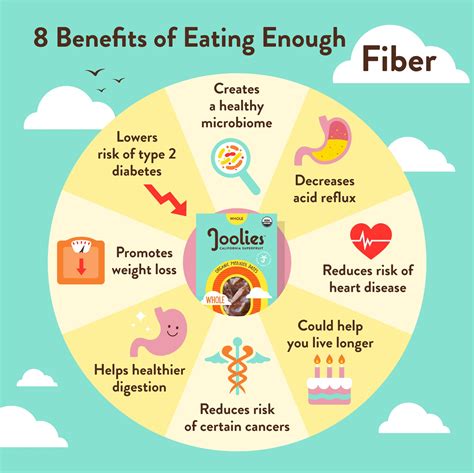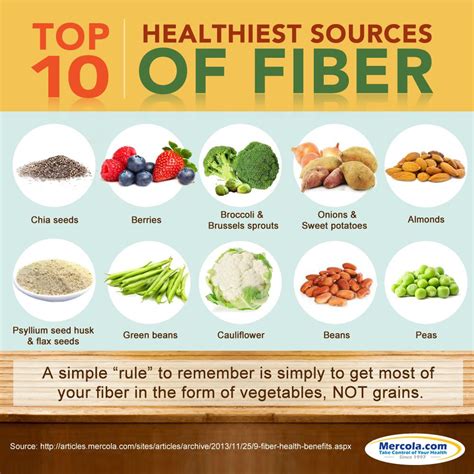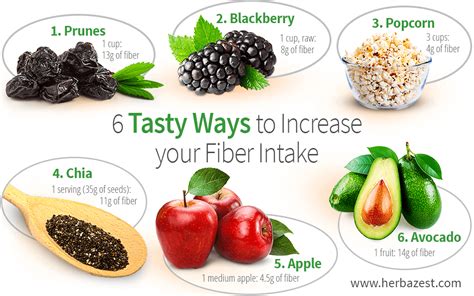Intro
Eating a diet rich in high fiber foods is one of the most effective ways to improve overall health and wellbeing. Fiber, also known as roughage, is a type of carbohydrate that is not easily broken down by the body and is found in plant-based foods such as fruits, vegetables, whole grains, and legumes. A high fiber diet has been shown to have numerous health benefits, including promoting regular bowel movements, lowering cholesterol levels, and controlling blood sugar levels. Despite these benefits, many people do not consume enough fiber in their diet, with the average person consuming only about 15 grams of fiber per day, which is well below the recommended daily intake of 25-30 grams.
The importance of high fiber foods cannot be overstated, as a diet lacking in fiber can lead to a range of health problems, including constipation, diverticulitis, and even certain types of cancer. Furthermore, a high fiber diet has been shown to be beneficial for weight management, as fiber-rich foods tend to be more filling and satisfying, making it easier to stick to a healthy weight loss diet. In addition, high fiber foods are often rich in other essential nutrients, such as vitamins, minerals, and antioxidants, which are important for maintaining overall health and wellbeing.
Incorporating high fiber foods into your diet can be easy and delicious, with a wide range of options available to suit all tastes and dietary preferences. From hearty whole grain breads and cereals, to fresh fruits and vegetables, and legumes such as beans and lentils, there are countless ways to boost your fiber intake and improve your overall health. In this article, we will explore the benefits of high fiber foods, discuss the best sources of fiber, and provide tips and recipes for incorporating more fiber into your diet.
Benefits of High Fiber Foods

Some of the key benefits of high fiber foods include:
- Promoting regular bowel movements and preventing constipation
- Lowering cholesterol levels and reducing the risk of heart disease
- Controlling blood sugar levels and reducing the risk of diabetes
- Aiding in weight management and weight loss
- Reducing the risk of certain types of cancer, such as colon cancer
- Improving overall health and wellbeing
Types of Fiber
There are two main types of fiber: soluble and insoluble. Soluble fiber dissolves in water and forms a gel-like substance in the digestive system, which helps to slow down the absorption of sugar and cholesterol. Insoluble fiber, on the other hand, does not dissolve in water and helps to add bulk to stool and promote regular bowel movements. Both types of fiber are important for maintaining a healthy digestive system and overall health.Best Sources of Fiber

It is recommended to aim for a variety of fiber-rich foods in your diet, rather than relying on a single source. This will help to ensure that you are getting a range of different types of fiber, as well as other essential nutrients.
High Fiber Foods for Breakfast
Starting your day with a high fiber breakfast can help to set you up for a healthy and energetic day. Some high fiber breakfast options include: * Oatmeal with fruit and nuts * Whole grain toast with avocado and eggs * Greek yogurt with berries and granola * Smoothies made with frozen fruit, spinach, and almond milkIncreasing Fiber Intake

It is also important to increase your fiber intake gradually, as a sudden increase can cause digestive discomfort. Aim to increase your fiber intake by 2-3 grams per day, until you reach the recommended daily intake of 25-30 grams.
High Fiber Recipes
Here are some delicious and easy-to-make high fiber recipes: * Lentil soup: made with red or green lentils, vegetables, and whole grain bread * Roasted vegetable salad: made with a variety of roasted vegetables, mixed greens, and a citrus vinaigrette * Quinoa and black bean bowl: made with cooked quinoa, black beans, roasted vegetables, and a drizzle of tahini sauce * Grilled chicken and vegetable skewers: made with marinated chicken, colorful vegetables, and a side of quinoa or brown riceConclusion and Final Thoughts

We invite you to share your favorite high fiber recipes and tips for increasing fiber intake in the comments below. Additionally, if you have any questions or concerns about incorporating high fiber foods into your diet, please don't hesitate to reach out. By working together, we can promote healthy eating habits and improve overall wellbeing.
What are the benefits of a high fiber diet?
+A high fiber diet has numerous health benefits, including promoting regular bowel movements, lowering cholesterol levels, and controlling blood sugar levels.
What are some good sources of fiber?
+Some good sources of fiber include fruits, vegetables, whole grains, and legumes, such as beans, lentils, and chickpeas.
How much fiber should I be eating per day?
+The recommended daily intake of fiber is 25-30 grams per day.
